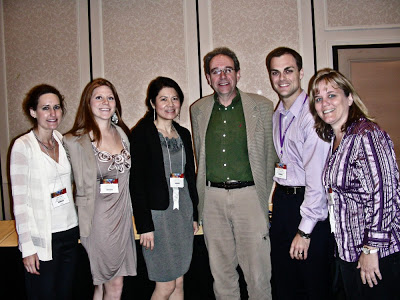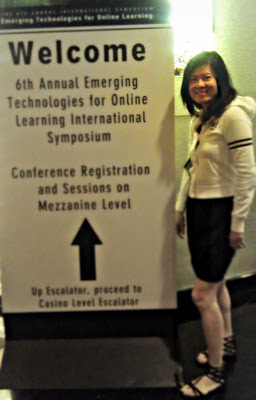Oct 2018 PADLA Meeting Notes: Case Studies and New Collaborative Technologies
I signed up for my first Pennsylvania Delaware New Jersey Distance Learning Association, PADLA, professional development event at Norristown, PA, at the Corbett Experience Center, a beautifully renovated 1700’s mill. October 11, 2018 came soon enough.
The heavy rain made the drive to the Corbett Experience Center a hairy experience; the Center was about 1.5 hours away. But I was there to learn, and according to the information webpage, from a mix of “Corporate, Non-Profit, K-12 and Higher Ed professionals” about the issues and technological/pedagogical advances that could enhance human performance in their contexts. There were four concurrent sessions in this half-day learning event. West Chester University and Holy Redeemer Health System presented case studies/methodologies on their organizational innovations while Mersive and StarLeaf gave demonstrations of some collaborative technologies.
Case Study 1: Developing Active Learning Spaces: Perspectives from West Chester University. JT Singh, Teresa Hudson, Yuki Yamamoto & Rui Lee, Ph.D: West Chester University Information Services & Technology.
Three members (Singh, Hudson and Yamamoto) from West Chester University (WCU) Information Services and Technology shared their thoughts on (and compared) the respective challenges, goals, and expectations in developing active learning spaces in WCU, a comprehensive public institution, with more than 17,000 students and over 100 programs of study. The team talked about the solutions, such as new technology, the processes employed to involve all stakeholders, and their major triumphs and setbacks. The multiyear renovation activities pointed them to adjustments to be made to projects in the coming years. The WCU approach to involving campus stakeholders in creating active learning spaces entailed the stages of design, planning, assessment, and iteration.
My key takeaway: Their case reminded me of the Learning Studio that VCU Alt-Lab built when I was there from 2012 to 2015. The major challenge we had then was time – time for instructors to learn about the available resources, time to prepare to use the resources, and time to try things out with their students. It sounded like these were challenges the WCU team had to deal with.
Case Study 2: Dreamscaping – Imagining a Brand-Based Experience in your New Space and its Technology Solutions” by Christine Holt, Chief Experience Officer: Spark @ the Holy Redeemer Transformation Center
This case study was very intriguing in concept and presentation. Christine Holt’s work at the Holy Redeemer Health System is refreshingly uncommon. She uses dreamscaping as a technique to brainstorm with her clients — what ID’s call front-end analysis.
My key takeaway:
- I was inspired by her effort to combine her design philosophy with the effect/solution she wanted to create/achieve.
- Her courage to move away from traditional design to experiential design. She designed immersive experiences that sought to teach her organizational staff how to improve the patient experience.
- Alignment was a big factor in her design.
- Relationship building, personalization and engagement were major considerations in creating transformative employee education experiences.
- What she designed focused on the in-person experience. Replicating this for online learning remains a challenge.
Mersive Pod
I had a hard time wrapping my head around this as I don’t have a mental model of this technology. What I did learn eventually was that this pod once plugged in allows multiple devices to share their content without the need for different adapters to be made available for different devices. I see this as advantageous. The WCU team mentioned that they deployed this in their new learning spaces.
Starleaf Videoconferencing
Since all the participants in my group were from higher ed, and were used to Zoom, WebEx or Blackboard Collaborate, we wondered how this technology offered an edge over these companies. I felt sorry for the presenters since Starleaf, Zoom and WebEx were all competitors in the videoconferencing business and they didn’t seem to be able to offer us any strong reasons for switching to Starleaf. I did find the following information that might shed some light for those interested in a comparison of Zoom and Starleaf: Compare Starleaf and Zoom videoconferencing.
It’s been more than 2 weeks since I went to this meeting, and the ideas I connected with are starting to fade. I’d say however that this event was helpful, if only I didn’t have to travel such a distance. I only wished more people had time to stay behind to chat and have lunch together. Till the next PADLA meeting.




